|
ABOUT THE PDC
REGISTRATION
KEY NOTE SPEAKER & PRESENTERS
SCHEDULE
SPECIAL EVENTS
CONTESTS
DREAM ART
MEDIA & PROMOTIONS
INTERNATIONAL ASSOCIATION FOR THE STUDY OF DREAMS
|
9th Annual PsiberDreaming Conference
"We are such stuff as dreams are made on..."
Prospero in William Shakespeare's The Tempest
September 26 - October 10, 2010
|
Keynote
Speaker
for the PsiberDreaming Conference is the
INCEPTION Documentary Director:
Roko Belic
IASD is honored to announce that the Keynote Presenter for this year's PsiberDreaming Conference "We Are Such Stuff As Dreams Are
Made On" will be t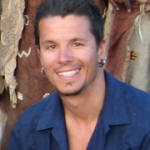 he director of the documentary film
created for the release of the
Inception
DVD, Roko Belic, whose presentation bears the working
title: "DREAMS: Cinema of the Subconscious." he director of the documentary film
created for the release of the
Inception
DVD, Roko Belic, whose presentation bears the working
title: "DREAMS: Cinema of the Subconscious."
Belic has been making films since childhood. In 1996 he founded a
production company, Wadi Rum, with his brother Adrian. His professional
directorial debut
Genghis Blues, a feature documentary, won over 40
international awards including the Sundance Audience Award and an
Academy Award®
nomination. Belic has worked in numerous capacities during his career
ranging from director of photography, editor, writer, producer and
director. He recently directed a documentary about dreams to be released
in conjunction with the Hollywood feature film
Inception.
Belic is now finishing a feature documentary called Happy
that explores the secrets of happiness.
|
|
|
Invited Presentations |
CARL JUNG'S RED BOOK
Jung's Red Book, published for the first time in 2009, contains
the dreams and visions Jung experienced during his famous "confrontation
with the Unconscious." This presentation will examine the Red Book
from several perspectives, including what it has to say about the
importance of dreaming, its relation to Jung's work as a whole, and its
cultural relevance in today's world. We will also look at some of the
paintings that Jung cr eated
to accompany his text. eated
to accompany his text.
Richard Russo is an author, artist and dream educator
in Berkeley, California, where he is Associate Director of the Dream
Institute of Northern California. He is Editor of Dream Time,
as well as a Past President of IASD. His books include Dreams are
Wiser Than Men.
Laurel McCabe, Ph.D. is a professor of Psychology at
Sonoma State
 University,
where she founded and coordinates the Master's program in Depth
Psychology. She's a former Board member of IASD and host of the 2007
conference at Sonoma State. She teaches courses on dreams, psychology of
religion and Jungian psychology, and has been very interested in the
historical importance of the publication of Jung's Red Book. University,
where she founded and coordinates the Master's program in Depth
Psychology. She's a former Board member of IASD and host of the 2007
conference at Sonoma State. She teaches courses on dreams, psychology of
religion and Jungian psychology, and has been very interested in the
historical importance of the publication of Jung's Red Book.
Abstract:
Jung’s Red Book: Themes and Images Jung's Red Book,
published for the first time in 2009, contains the dreams and
visions Jung experienced during his famous "confrontation with the
Unconscious." This presentation looks at some of the themes of the Red
Book: the nature of God, good and evil, death and the ancestors, the
conundrum of incarnation, the psychology of prophecy.
THE EDGE OF DREAMING
PsiberDreaming 2010 welcomes Scottish filmmaker
Amy Hardie
whose film The Edge of
 Dreaming won prizes at the
Edinburgh Film Festival and recently premiered on the PBS series POV.
Hardie has built a career making science documentaries that reflect her
rational temperament. When she dreamed one night that her horse was
dying, only to wake the next morning and find the horse dead, she
dismissed the incident as a coincidence. Then she dreamed she would die
at age 48 — only one year away. When Hardie does get ill, just as the
dream predicted, she visits neuroscience experts and eventually a
shaman. The Edge of Dreaming is an evocative, intimate
chronicle of that year and a fascinating investigation into the human
subconscious. Dreaming won prizes at the
Edinburgh Film Festival and recently premiered on the PBS series POV.
Hardie has built a career making science documentaries that reflect her
rational temperament. When she dreamed one night that her horse was
dying, only to wake the next morning and find the horse dead, she
dismissed the incident as a coincidence. Then she dreamed she would die
at age 48 — only one year away. When Hardie does get ill, just as the
dream predicted, she visits neuroscience experts and eventually a
shaman. The Edge of Dreaming is an evocative, intimate
chronicle of that year and a fascinating investigation into the human
subconscious.
"The Edge of Dreaming" is currently being streamed by PBS at
http://www.pbs.org/pov/edgeofdreaming/watch.php
(Note: This feature is available only within the US)
|
Presenters, Bios and Presentation Abstracts
|
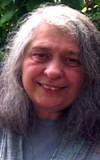 |
Jean Cambell
Dreaming the Family Spirit:
Intergenerational Shared Dreams
Conference Host Jean Campbell is a past President of
IASD and Chair of the IASD Board from 2007-2010. Her
book Group Dreaming: Dreams to the Tenth Power discusses
her research in shared and mutual dreaming. She is CEO
of the nonprofit, The iMAGE Project and moderator of the
online group The World Dreams Peace Bridge
www.worlddreamspeacebridge.org |
Abstract
Several years ago, when author Jean Campbell dreamed
about a shape changer named Sheena, she unexpectedly
discovered that other members of her family had dreamed
this same "dream character." The Sheena dreams have
continued to this day, showing the dream character as
evolving. This paper is an exploration of the possible
meaning of this family phenomenon, and an inquiry into
the family dreams of others.
|
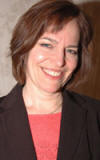 |
Dr. Laurel Clark
That Recurring Dream House ... and the Door to
Lucidity
Laurel Clark, President of the School of Metaphysics, is
a teacher, interfaith minister, and intuitive counselor.
As a full-time volunteer, she teaches mind skills such
as concentration, meditation, visualization, and dreams.
Author of the books The Law of Attraction and Other
Secrets of Visualization, Dharma: Finding Your Soul’s
Purpose, Karmic Healing, Concentration and numerous
articles on dreams.
www.som.org
|
Abstract:
Sometimes people dream of dream houses, or dream
schools, or dream buildings ... the same building in
different dreams. In keeping dream journals for many
years, I've noticed a particular "dream house" and a
particular "dream dormitory" that recur in my dreams.
Neither one is a place that is familiar in my physical
waking reality; yet, they have become familiar dream
locations.
An interesting progression has occurred. At first, I
noticed upon awakening that I had dreamed of these
places before, even though the dreams themselves were
not the same. Then, I began to notice in the dream
itself that the house is familiar. This was followed by
dreams in which I became aware (in the dream) that the
house is familiar because I have been there in previous
dreams. .. and the dream becomes lucid. The house is a
"doorway" to becoming aware in the dream state.
Since I have not been a frequent lucid dreamer, these
dreams are particularly fascinating to me. They have
opened a world of lucid dreaming that was previously
uncommon in my dream life.
Upon discussing this pattern with other people, I have
discovered that many people have a similar experience.
The familiar house changes in the dreams as the dreamer
changes his or her awareness while awake; the changing
dream house also awakens the dreamer to changes
occurring in his or her waking state of consciousness.
From the interest generated by discussing this topic, in
preparation for a presentation at this year's IASD
Conference and after giving the presentation, I am
considering writing book about it. So I am hoping that
this year's PDC discussion will generate more ideas and
knowledge for the dream community to share.
|
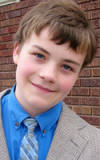 |
Hezekiah Condron
Behind the Scenes at THE DREAM MYSTERY: An American
Teen's Search for Dream Elders (Video /
Presentation)
Hezekiah Condron (USA) has studied the
similarities between universal stories and individual
dreams since he was born. He lives at the College of
Metaphysics with his parents Barbara and Daniel, both
teachers. He is studying to become a dreamologist and
includes dreamwork at his website www.indigo-chef.com.
Hezekiah presented THE DREAM MYSTERY: An American Teen's
Search for Dream Elders at the 2010 IASD conference and
became the youngest recipient of CEs. He is presently
working on a new film using footage he captured this
year.
Barbara Condron, DM, DD (USA) began
studying dreams in the 1960s, teaching in 70s,
researching in 80s, creating a national dream hotline
and a website in 90s, researching global trends in
2000s. The author of over a dozen books on consciousness
including How to Raise an Indigo Child, she serves as
governor of international education for the School of
Metaphysics where she enjoys teaching souls of all ages
on campus and online at dreamschool.org.
|
Abstract
Hezekiah Condron was 14 years old when Stanley Krippner
agreed to an interview following his keynote address at
the 2009 IASD Conference in Chicago. What Stanley told
him changed his life. Kie went on to interview Patricia
Garfield, Robert Moss, Rita Dwyer, Dale Graff, Richard
Wilkerson, and ten other dream experts.
In this presentation, he finds himself in the
interviewee's chair as his mother, Barbara, asks
questions about where his love of films began, what
inspires him, and how a dream gave him a deja vu glimpse
of himself in his 40s. Clips of his interviews, some not
included in the film, will be included and Kie will
discuss his next film - working title The
Second Life - based on new interviews
filmed this year in Asheville.
His mother Barbara, and probably his father Daniel, will
be onboard during the discussion to answer your
questions about how to empower the kids in your life and
what's it is like to mentor such a passionate soul.
|
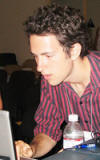 |
Nick Cumbo
Invisible Schools
Nick Cumbo is a primary school teacher in Melbourne,
Australia. He is also the creator of Sea Life
(www.sealifedreams.com), a website dedicated to the
community journaling and exploration of dreams. |
Abstract
Our dreams are a place of learning. This paper explores
the prospect of "invisible schools", schools that
operate from within the dream realm, and that are
accessible to us each night when we sleep. Are some of
us already visiting these schools unconsciously? Is it
possible to do so intentionally?
|
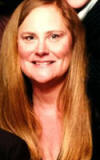 |
Beverly D'Urso
Emotions in Dreams Leading to Self
Realization (Workshop)
Dr. Beverly (Kedzierski Heart) D’Urso, an
“extraordinary” lucid dreamer all her life, originally
worked with Dr. Stephen LaBerge at Stanford. Numerous
major magazines, such as LIFE, Smithsonian, and OMNI,
television specials, books, and radio talk shows have
featured her life and her dreams. Using her practical
philosophy called lucid living, she has taught her own
workshops and presented at conferences for decades.
Working with Stanford University Professors, she
completed her Masters degree in 1980, involving
Cognitive Psychology, and her Ph.D. in 1983, focusing on
Artificial Intelligence. Prior to working as a
researcher, consultant, and a college professor, she
created several startup companies. Dr. D’Urso has over
fifty publications and has won several awards, often
placing well in IASD dream contests. She currently
follows the 'The Diamond Approach' spiritual path of A.
H. Almaas. |
Abstract:
My lucid dreaming led me to conscious lucid-living, or
to what some call 'knowing the Self.' I now see how my
emotional, non-lucid dreams assisted this process by
helping open both my mind and my body. These dreams
naturally took me to major experiences of my past, and
gave me a chance to delve into my emotions in a deeper
manner, while awakening to their effect on my body. I
then became aware of similar painful emotional patterns
receding in my daily life. Really feeling, rather than
resisting, the emotions of my dreams and of my life,
including the related experiences of my body, took me to
an empty space where my essence could unfold. I present
a workshop that focuses on the emotional experiences of
dreams, with instructions that will evolve each day for
both lucid and non-lucid dreamers when asleep and awake.
References:
"Levels of Consciousness and Lucidity while Dreaming or
Awake," Presentation for the International Association
for the Study of Dreams (IASD) PsiberDreaming Conference
(PDC2009)
http://wedreamnow.info/?p=124
The Unfolding Now, A. H. Almass, Shambhala, June 10,
2008.
http://ahalmaas.com/Books/unfolding_now.html
|
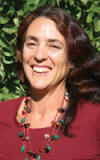 |
Joy Fatooh
Elders Between Worlds
(Video/Presentation)
Since dreaming the same dream as my sister at age 11,
I've been fascinated by dreams' potential to
communicate by nonphysical means. I have a dual career
with public lands as Wildlife Biologist and Outreach
Communications Specialist: writing, illustration,
graphic design, audio and video. Dream communication is
a freelance avocation!
http://fatooh.org/art |
Abstract
I gave the short video The Message a
dedication, "To all whose elders are between worlds."
It's a story closely based on an actual event of
apparent dream telepathy among a man in the advanced
stages of Alzheimer's who "couldn't communicate at all,"
and three of his family members. Have you experienced
dreams through which love, concern, information and
understanding are shared with those who are still alive
in body, yet seem so far away?
|
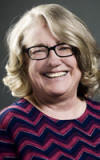 |
Jayne Gackenbach
Video Game Play and Dreams: What are the
Important Questions?
Grant MacEwan University's, Jayne Gackenbach, has a
Ph.D. in Experimental Psychology and is one of many past
presidents of the International Association for the
Study of Dreams. In the last 10 years she has developed
an expertise on the psychology of the Internet and video
game play, after over 20 years of research and
professional activity in the areas of dreams. Along with
numerous publications, she has four books on sleep and
dreams as well as three on the psychology of the
Internet. Her current research interest is in video game
play and its impact on various states of consciousness
including dreams. |
Abstract
The potential negative effects of video game play have
long been studied. What is now becoming increasingly
clear, is that there are various positive educational
and psychological effects as well. There is no doubt
that video game play represents a complex experience of
childhood, and now of adulthood, which is not easily
reduced to simple condemnations or accolades. Video
gaming is one of the fastest growing entertainment
industries with revenues arguably the same as, or
greater than, the movie industry, depending on how you
count. Thus, gaming is too wide spread to reduce to
purely self selection. Not only is there something
enticing about interacting in and with virtual worlds,
there is increasing social pressure to play.
|
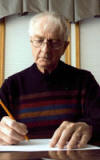 |
Dale Graff
When Dreamtimes Intersect
Dale E. Graff, B.S., M.S. is an internationally
recognized lecturer, writer and researcher in psi
topics. He is a former director of Project Stargate, the
government program for research and applications of
remote viewing. His books, Tracks in the Psychic
Wilderness and River Dreams discuss remote viewing, psi
dreaming/precognition and synchronicities.
www.dalegraff.com |
Abstract
Occasionally dreamtimes can be shared by those who
desire to experience them or by others who may have some
common connection. But can our dreamtimes be accessed by
strangers, or be influenced by strangers? Conscious
State Psi (CSP) and Dream State Psi (DSP) experiences by
colleagues, myself and others are reviewed to provide
insight into this question. Synchronicity, precognition
or other psi effects suggest clues as to the conditions
or situations that may result in unwitting dreamtime
interactions or influences. These possibilities are
especially relevant when considering the dreamtime
“extraction” or “influence” concepts in the recent
movie, Inception.
|
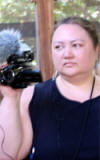
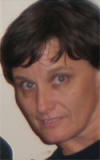 |
Heidi Guttman/Teresa MacColl
Indigenous Dreaming Cultures
(Video/Presentation)
Heidi Guttmann, MA, is a US filmmaker whose work has
been shown at the Native Voice film festival. She holds
a Master’s degree from Naropa University, concentration
in Sacred Cinema. She is the President of Circle of
Ancestors, a non-profit which reconnects people with
their own ancestral traditions.
Teresa MacColl, MA, is a cultural practitioner with a
masters degree in Indigenous Mind from Naropa
University. Teresa is also an ancestral dream coach,
helping people learn how to understand and interpret
dream messages from their ancestors and the spiritual
world, and also teaching students to study and observe
the way lunar, solar, and planetary cycles influence
dreams. |
Abstract
Indigenous Dreaming Cultures is a work-in-progress story
of how Hawaiians, Native Americans and cultures all over
the world view their dreams, via interviews with elders
as well as students. Using new ethnography methods to
intertwine what dreamers learn along the way, this film
will not just document a culture's ancient wisdom about
dreams, but demonstrate its use and relevance to all
dreamers living in modern cultures.
|
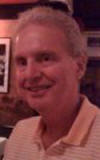 |
Louis Hagood
Who is the Dreamer Who Dreams the
Dream?
Louis Hagood, PhD is a licensed psychoanalyst
who does dream play face-to-face or via email.
His book Midlife at the Oasis: Dreaming the
Second Half of Life was published in 2002.
www.PlayingWithDreams.blogspot.com |
Abstract
Abstract: In 2000, one-hundred years after
Freud's "The Interpretation of Dreams,"
James Grotstein published, "Who is the
Dreamer Who Dreams the Dream," which is
simply the best Psychoanalytic book on dreams
since Freud. The book explores mystical and
quantum realms that were unavailable to Freud,
and are considered in this thread.
|
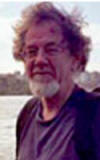 |
Tony Hawkins
The Infinite Nature of Dreams
Tony Hawkins is a writer who lives in London. |
Abstract
In reexamining the story of Elias Howe and the
dream which led to the sewing machine, I try to
show that his dream is rooted in a timeless
dimension of supernormal intelligence. I believe
this dimension, which I call the infinite, is
the root of everything, including dreams. I
suspect it is the root of all dreams. This may
not be so, but if true it would provide a
fundamental key to their understanding.
|
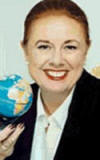 |
Velva Lee Heraty
Mainstreaming a Psi Dream
Velva Lee Heraty is a Jungian Depth
Psychotherapist practicing in Chicago, IL and
St. Petersburg, FL. As Dream Momma she blogs on
dreams for
Creative Loafing Publications. Velva has
just completed her book,The Dream Belongs to
the Dreamer, a hands-on, how-to book
designed to introduce dream work to the
mainstream through a process called Subjective
Symbol Immersion Method or SSIM. |
Abstract
The art of bringing dreamwork to the mainstream
is an ongoing challenge. This presentation will
demonstrate a method of examining and expanding
a dream fragment so that the average layperson
can work successfully with their dreams, help
others with their dreams, and participate in a
volunteer dream group. The ultimate goal is to
bring familiarity of dreamwork mainstream as a
portal to more sophisticated methodology. |
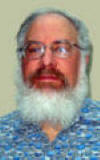 |
Curtiss Hoffman
There Are Fairies at the Bottom of My
Consciousness: Who Are They and What Are They
Doing There?
Dr. Curtiss Hoffman is professor of Anthropology
at Bridgewater State University, specializing in
the archaeology of northeastern North
America, mythology, and the anthropology of
consciousness. He serves on the IASD Board and
was Program Chair for the annual conference in
2009 and 2010. Along with Dolores Nurss, he is
co-host of the Outer Inn for the annual IASD
Psiberdreaming Conference. |
Abstract
In our dreaming, we sometimes encounter the
presence of the “other” – beings who are clearly
not exactly human, even though they may somewhat
resemble humans. Traditions of these encounters
are found in cultures all over the world. I will
propose some ideas about how to fit these
“others” (variously called Faerie, Nature
Spirits, Devas, or Pukwudjis) into a
model of consciousness.
|
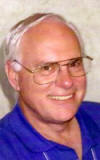 |
Robert J. Hoss
Self-Inception: The Architect Within
Bob Hoss M.S. is author of Dream Language, IASD
Treasurer and Past President, and Dream Science
Foundation Director for funding research grants.
A scientist with Gestalt training, he has taught dreamwork for 30 years, and is on the faculty of
the Haden Institute. Bob hosted the IASD Dream
Time radio series.
www.dreamscience.org |
Abstract
Although Hollywood may have staged the players
in the film Inception as outside forces, and
stretched the nature of their roles much as they
stretched time, our dreams do indeed contain
many of the elements of Inception. However, our
nightly dreams tend toward a natural inception
where we venture into our own unconscious to
engage with our own inner “projections,” guided
by our own "architect within," which in a sense
designs our dreams to follow a natural tendency
toward mental well-being.
|
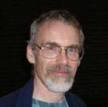 |
Ed Kellogg
Developing Dream Psi
Abilities (Workshop)
Once
again for the 2010 PsiberDreaming Conference, Conference Contest
Facilitator
Ed Kellogg will present a workshop
coordinating all of the conference contests. Participants in this
Workshop will have the opportunity to do more than participate in the
contests for fun; they can do so as part of a coordinated, online
dream-psi intensive training.
Enjoy testing your psi dreaming skills and win great prizes
at three exciting PsiberDreaming Contests
|
|
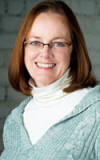 |
Mary Pat Lynch
The Astrology of Dreaming (Workshop)
Mary Pat Lynch is exploring new ways to
integrate dreamwork with other intuitive
languages like shamanic practice, the Tarot and
astrology. An active IASD member, and presenter
at PsiberDreaming and Annual conferences, you
can see her current projects at ThreeCauldrons
(http://threecauldrons.com) and Rising Moon Astrology
(http://risingmoonastrology.blogspot.com). |
Abstract
We live in a time of great change, reflected in
our lives and also in the heavens. Powerful
planets form unusual patterns we won't see again
in our lifetime, or many lifetimes to come. As
strong dreamers, the energy shifts can show up
in our nighttime journeys and visitations.
This year's conference happens under a waning
Moon, culminating in the New Moon in Libra on
October 7. Other influential transits will also
occur during this time. How will our dreams
reflect these movements of the planets?
This workshop dives into the connection between
dreams and astrology. We'll discuss where to
look in the birth chart for insights into the
dreaming self, and how to work with transiting
planets to incubate dreams and gain a new
context for working with them. Focusing on the
Moon, and outer planets Uranus, Neptune and
Pluto, we'll experiment with incubating dreams
aligned with these energies, and share our
results. No experience with astrology is needed
to participate.
|
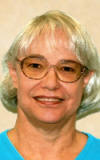 |
Linda Lane Magallón,
M.B.A
A Dream Is What You
See: The Special Effects of the State of Sleep
Linda’s field research in
the world of sleep stems from an encounter with
a dream character who appeared in her first
lucid dream and, later, in the dreams of other
members of the dreaming community.
She authored
Mutual Dreaming after creating numerous waking and dreaming projects
(Fly-By-Night
Club
research group,
Bay Area
Dreamworkers Group and
Seth Dream
Network, among many others). Dreams,
articles and presentations can be found at her
web site, dreamflyer.net. (http://www.dreamflyer.net)
|
Abstract
The movie
Inception presents an interesting quandary.
Is a dream totally self-created or can it be
shaped and inhabited by fellow humans? Although
we have no ultimate answers yet, we now have
some tools for the detective hunt. It helps to
think of the dream as a virtual reality,
enhanced with mild or wild special effects. The
very nature of the altered state of sleep allows
even our dream bodies to morph away from
standard physical appearance and behavior.
Nevertheless, a perceptive dream contains clues
that will link an avatar with its hidden human
influence. We can identify the person behind the
costume if we train ourselves to detect the
analogous structure of perception that has been
revealed through stimulus-response research and
backed with a neurological understanding of the
visual system. When a dream is what you see,
what you see isn’t always what you get.
|
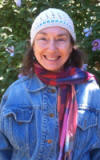 |
Sandra Olliges
Thought Forms in Dreams and Shamanic Visions
Sandy Olliges is currently
enrolled in the Dream Studies certificate
program at Saybrook University, where she
graduated with an MA in Human Science in 2008.
Sandy has completed six years of intensive work
in cross-cultural shamanism at the Flight of the
Hawk in Half Moon Bay, California, and has
several years experience in providing shamanic
counseling and divination. She is interested in
the intersection of shamanism and dream work.
Having taught Aikido since 1987 and Yoga since
1991, Sandy currently teaches Aikido at San Jose
State University and Yoga in Sunnyvale,
California. Recently retired from a 20-year
career in Environmental Management, she
continues to offer Environmental consulting,
enjoys hiking and camping, and loves spending
time with her granddaughter.
|
Abstract
Drawing on the techniques of developing
transformative imagery through shamanic visions
and dreams (Feinstein & Krippner, 2006); and on
the Theosophical methods of interpretation of
astral thought-forms (Besant & Leadbeater,
1999), I dreamed an image of one of my habitual
thought patterns. Becoming aware of one's
habitual thought patterns is a way to increase
authenticity, and by dissolving the thought
pattern one can release energy for creativity.
Through the process of focused shamanic journeys
and dream incubation I dreamed the thought-form,
had a vision of how to transform it, and then
had two subsequent dreams of the thought-form.
In the third dream, I was releasing it. This is
a powerful method of self-awareness and
transformation.
|
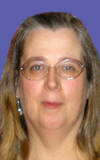 |
Bobbie Ann Pimm
Dream Journaling: Your Guide to Discovering
the stuff YOUR dreams are made on
Bobbie Ann Pimm is author of, Notes
From a Dreamer … on Dreaming: A Personal Journey
in Dream Interpretation. This
workshop, and (hopefully) her next book, is born
from working with Bob Van de Castle on a
revision of his book, Our Dreaming
Mind, and her continuing
exploration into the world of her dreams.
|
Abstract:
Every dream is unique – a hodgepodge of the
daily and life experiences, thoughts, actions
and reactions of each unique dreamer. Your
dreams reflect who you are (the stuff that
dreams are made on) but they are also directions
leading you to be the best (and happiest) you
can be. If your dreams provide the directions,
then your dream journal is your map – starting
with where you’ve already been and pointing you
to where you are going and your highest
potential.
There is no right or wrong way to journal.
Different dreamwork techniques require different
aspects and details of the dream be recorded,
examined and acted upon. In this
workshop/discussion, we will explore different
formats and techniques for dream journaling –
some simple, others more detailed, and still
others for specific dreams, including dream
incubation, lucid and precognitive dreaming.
Each can shed new light -- even on old dreams.
Sharing of ideas and techniques between
participants is highly encouraged.
|
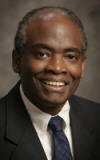 |
Donadrian Rice
Archetypal Neurons in Dreams
Donadrian (Don) Rice, Ph.D. is chair of
psychology at the University of West Georgia,
where he teaches courses on the Psychology of
Dreams, Mind/body psychology, clinical hypnosis,
and neuroscience. In the late sixties and early
seventies, Don worked as an assistant to Stanley Krippner at the Maimonides medical center dream
Laboratory in Brooklyn, NY where the research
focus was on Dream Telepathy. |
Abstract
Current research findings in neuroscience
continue to point to the fact, that long-term
explicit and implicit memory is created by neuro-chemical
processes that consolidate during the dreaming
stage of sleep. Too, it is established that the
experience of learning is accompanied by synapto-genesis:
the creation of new neuronal pathways. This
paper proposes that consolidated memories
provide the bases for the thematic structure of
dreams that play out in the individual’s waking
and dreaming life. These neuronal pathways
become “archetypal” because they now provide the
template for how one incorporates new
experiences and maintains past experiences. This
has implications for using the dreaming process
to incorporate emotional regulation to
therapeutic situations ranging from conditions
such as post-traumatic stress disorder to
personal growth. I will elaborate on this theory
and give examples of how this leads to a better
understanding of personality development and
therapeutic effectiveness.
|
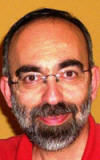 |
Massimo Schinco
Matter is Such Stuff as Dreams are Made On
Massimo Schinco, Psychoterapist, lives in Italy.
He teaches in the Milan Centre of Family Therapy
and in the Conservatorio Ghedini, Cuneo. As an
author he focuses on creative change and is
frequently called upon as a speaker and
lecturer. Massimo is an IASD Member who
presented at PDC 2008 and at the IASD
International Conference in 2010. |
Abstract
Every day we experience the continuity existing
between the material aspects of our lives and
the state of our individual and collective
minds. One of the major obstacles to a full
scientific acknowledgement of this reality is
the lack of a good theory fitting with the data
coming from research (Radin, 1997).
On the still long pathway to such a theory, a
valuable help can be provided by fully
considering mind as a “dreaming mind” (Van De
Castle, 1994.) whose boundaries have fractal
peculiarities (Abraham, 1998). Overlapping these
features to the “subtle film’s” metaphor that
Henri Bergson (1938) used to summarize George
Berkley’s theory on existence as perception
(1710), we get a conceptually simple frame where
data coming from dreamworking, clinics, research
and anecdotal make sense, helping to step
forward and surmount the rigid dualism between
matter and mind that still characterize not only
science but western culture in general.
|
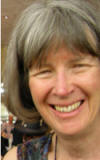 |
Gloria Sturzenacker
Reality Check Workshop: Critical Thinking
for Psi Dreamers
Gloria Sturzenacker is an editor, writer, and
graphic artist living in New York City. She has
a certificate in teaching critical thinking from
Pace University and bachelor’s and master’s
degrees in journalism. At the 2005 PDC, she
presented a paper titled “Does Scientific
Honesty Still Require Skepticism About Psi?”
|
Abstract
Experiencing psi in our dreams invites us into a
realm of new possibilities, powers, and
potential dangers. It’s a good idea to keep our
wits about us—as we follow where psi dreams lead
us, as well as in evaluating what’s psi about
any particular dream. Clear, well-grounded
thinking can improve our ability to recognize
psi information accurately, use it wisely, and
discuss it credibly. This workshop aims to
sharpen the skills of inquiry and discernment
through some basic thought exercises. It builds
on the framework Gloria presented in her
critical thinking paper during the 2007 PDC—but
you don’t need to have participated in that
session to join this one.
|
 |
Jaelynne Tolman
Beautiful Dreams of Cancer
Jaelynne Tolman has actively studied dreams
since 2003, but her interest began years ago as
a literature and language student. She holds a
dream facilitator certificate from the Marin
Institute of Projective Dreamwork and is
currently the back-up moderator for the online
Dreamwheel Forum. She and her husband have a
ten-year-old daughter. |
Abstract
In May of this year I was diagnosed with stage
four metastatic colon cancer that has spread to
my liver and bones. While the diagnosis is
devastating, my dreams have been exceptionally
encouraging and beautiful, indicating that many
years lie ahead and that I will discover new
talents as a result of this violent "gift."
The paper will examine:
*my precognitive dreams about the cancer
(including one predicting my sister's current
battle with uterine cancer and our mutual
support of each other)
*advice the dreams gave me before and after
diagnosis (including being my own surgeon,
following my instincts, and looking for help
outside the confines of Western medicine)
*the useful counsel from a group dream
incubation regarding my health (including diet
change, detoxification, and acupuncture)
*the hope and faith the dreams have given me
that I might otherwise not feel.
The paper will ask:
*for others to share similar experiences where
hope was given through dreams despite
overwhelming physical odds
*for people to project further on my own dreams'
wisdom and perhaps offer insights I may have
missed.
|
|
|
|
Find
us on
FaceBook & YouTube!


|

 eated
to accompany his text.
eated
to accompany his text. University,
where she founded and coordinates the Master's program in Depth
Psychology. She's a former Board member of IASD and host of the 2007
conference at Sonoma State. She teaches courses on dreams, psychology of
religion and Jungian psychology, and has been very interested in the
historical importance of the publication of Jung's Red Book.
University,
where she founded and coordinates the Master's program in Depth
Psychology. She's a former Board member of IASD and host of the 2007
conference at Sonoma State. She teaches courses on dreams, psychology of
religion and Jungian psychology, and has been very interested in the
historical importance of the publication of Jung's Red Book. Dreaming won prizes at the
Edinburgh Film Festival and recently premiered on the PBS series POV.
Hardie has built a career making science documentaries that reflect her
rational temperament. When she dreamed one night that her horse was
dying, only to wake the next morning and find the horse dead, she
dismissed the incident as a coincidence. Then she dreamed she would die
at age 48 — only one year away. When Hardie does get ill, just as the
dream predicted, she visits neuroscience experts and eventually a
shaman. The Edge of Dreaming is an evocative, intimate
chronicle of that year and a fascinating investigation into the human
subconscious.
Dreaming won prizes at the
Edinburgh Film Festival and recently premiered on the PBS series POV.
Hardie has built a career making science documentaries that reflect her
rational temperament. When she dreamed one night that her horse was
dying, only to wake the next morning and find the horse dead, she
dismissed the incident as a coincidence. Then she dreamed she would die
at age 48 — only one year away. When Hardie does get ill, just as the
dream predicted, she visits neuroscience experts and eventually a
shaman. The Edge of Dreaming is an evocative, intimate
chronicle of that year and a fascinating investigation into the human
subconscious.

























